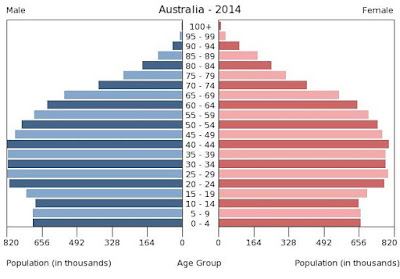Economy of Australia
Agricultural production in Australia includes cattle, wheat, dairy, fruits/vegetables, and nuts. The mainly produce lamb meet and wool.
 |
| Source: |
The main extraction industry in Australia is mining, which include coal, iron, ore, and gold. They also extract natural gas and uranium.
The service sector in Australia makes up around 70% of GDP, a few of the main service industries in Australia include retail, construction, transportation, and health.
 |
The primary exports from australia include coal, iron, ore, gold, meat, wool, alumina, wheat, machinery, and transportation equipment, while their primary imports include machinery, transportation equipment, computers, telecommunications equipment, crude oil, and petroleum.
During early development the agricultural and manufacturing sectors were the most important to Australia's economy. While they are still prevalent, the service sector has become the largest industry as Australia has become a developed country.
During early development the agricultural and manufacturing sectors were the most important to Australia's economy. While they are still prevalent, the service sector has become the largest industry as Australia has become a developed country.








